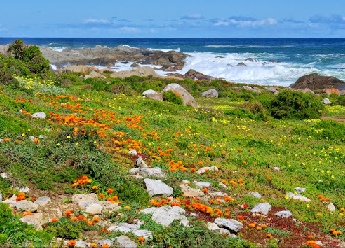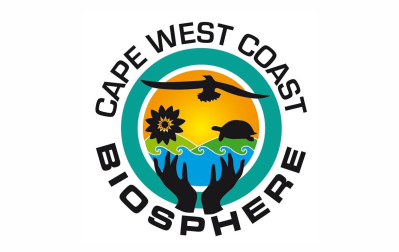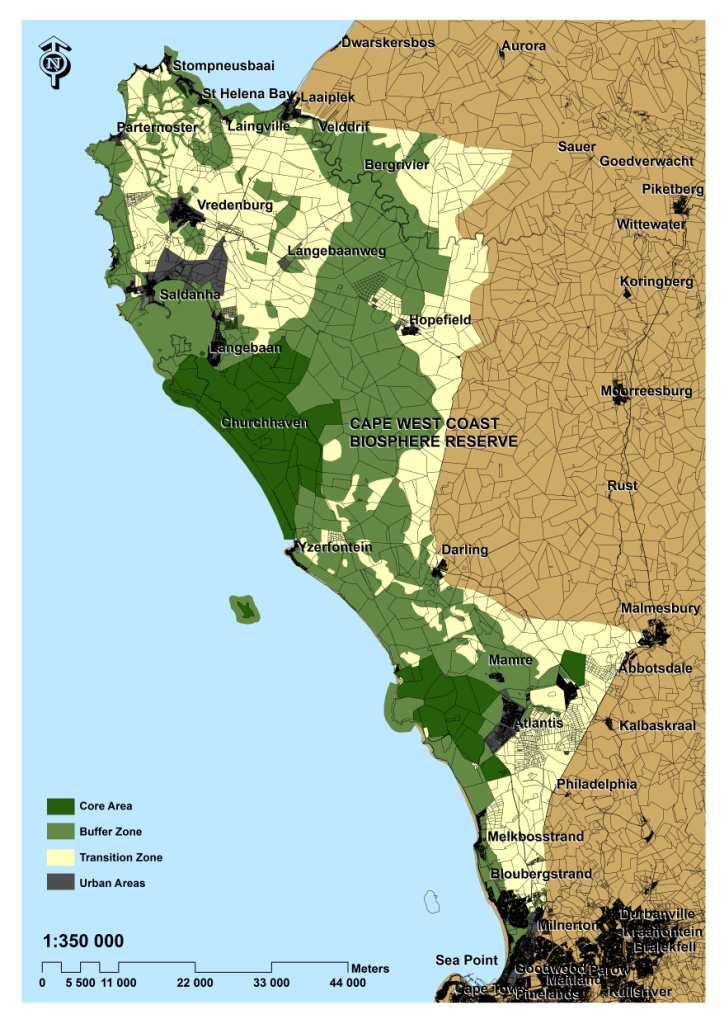Cape West Coast Biosphere Reserve
The Cape West Coast Biosphere Reserve (CWCBR) is a vast expanse hugging the southernmost section of the Western Coastline of South Africa.

Introduction
The West Coast National Park is the terrestrial core area of the CWCBR and the seascape surrounding Dassen Island forms the marine core. The CWCBR includes five major flora sub-
Stats
UNESCO Designation: 2000
Management Entity: Cape West Coast Biosphere Reserve Non-
Total Area: 387 000 ha, including a marine portion of 20 000 ha
Core Zone: 59 000 ha (terrestrial); 20 000 ha (marine)
Buffer Zone: 58 000 ha
Transition Zone: 150 000 ha
Contact
Email: info@capebiosphere.co.za
Tel: +27 (0)83 708 4007
Tel: +27 (0)22 125 0049
Postal: PO Box 283, Darling, Western Cape, 7345
Website: www.capebiosphere.co.za
Flagship Projects
National Department of Environmental Affairs –
At the same time the project had an 8 196 person day target for the same period. On 31 March 2018 the total target was met, thus a 100% target reached and 108 jobs created in five local communities. These individuals were previously employees of the CWCBR but through the NRM project and with the training they received, they were able to establish and start their own businesses and are now creating jobs in their communities, thus subcontracting with the CWCBR and able to tender for other similar job opportunities.


